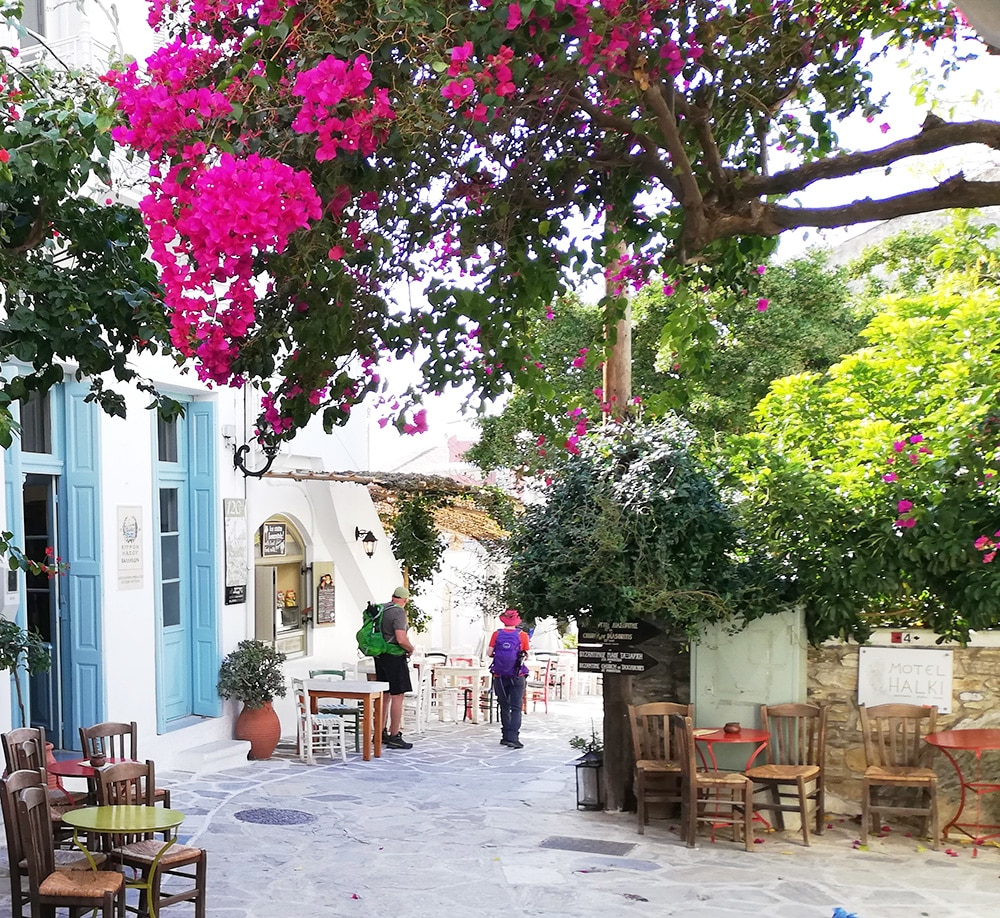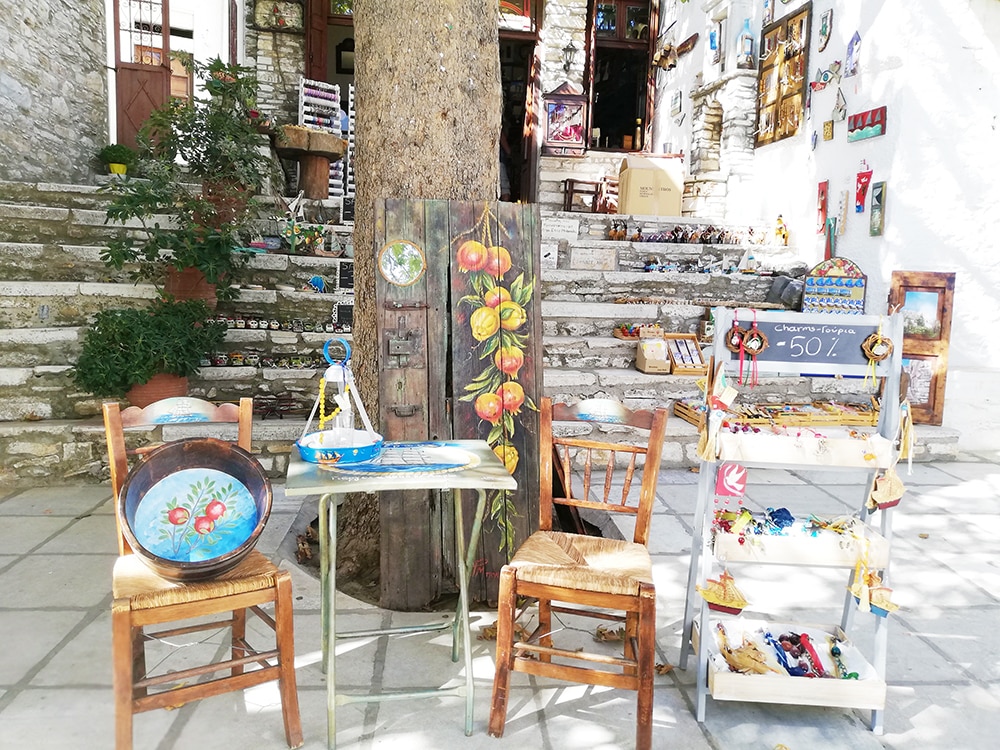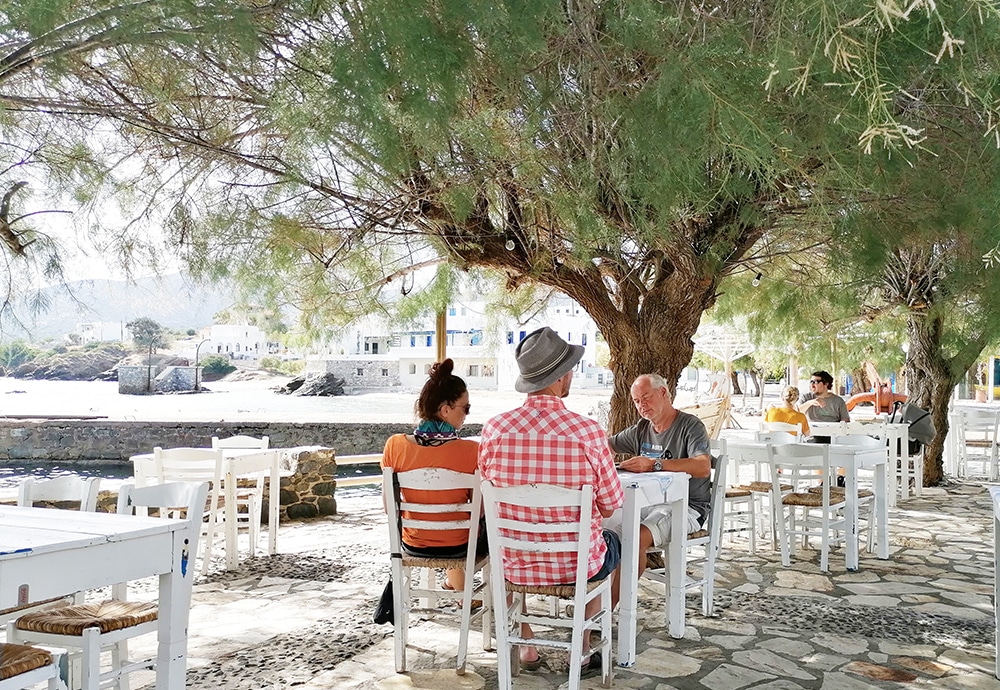WHAT TO SEE IN NAXOS
The island
The inhabitants are around 20,000, of which around 1/3 live in Chora, the capital and main port of the island; the second most important town is Filoti, inside the island. The main activities of the population, after tourism, are agriculture and livestock farming. Fishing occupies an insignificant part. Naxos is the largest island of the Cyclades archipelago (from the Greek “Kiklos” = circle, the name of the archipelago derives from the fact that its islands form a circle around the sacred island of Delos, near Mykonos).
From North to South it is approximately 37 km long, while from West to East it is approximately 23 km wide; the coastal perimeter is 148 km. In addition to being the most fertile and richest in water, it is also the most mountainous: a chain of imposing peaks culminates with the highest point of the archipelago, Mount Zeus, which exceeds 1,000 metres, on which it is possible to climb and admire the sunrise and the magnificent panorama of the Cycladic islands around Naxos, on the clearest days there are over 30 islands!. The island produces olives, grapes, fruit, wheat and the famous potatoes which it exports throughout Greece, as well as delicious jams and exquisite honey. Since ancient times it has been famous for the large quantity of white marble extracted from its mountains. The main port, Chora, is located on the western side, while the port of Moutsouna, on the eastern coast, was reserved for ships transporting marble, granite and emery extracted from the inland mines. Today this transport activity is in crisis and the town of Moutsouna is establishing itself as a small seaside resort.
The discrete road network covers the northern and central parts of the island; the rugged and mountainous southern area is inaccessible except by off-road vehicles, apart from the coastal road that connects the magnificent south-western beaches. The public service is discreet and widespread towards the beaches of the south-west coast, less frequent for the other towns within the island and the other seaside resorts. The bus station and the bus timetable information office (KTEL) are located on the small square in front of the main pier of the port; Outside there is a poster listing the routes and the relative outward and return times of the buses.
The island is a wonderful place to explore, even on foot: many ancient paths connect villages, churches and archaeological sites to discover. At the ZOOM stationery/bookstore on the port promenade you can find very detailed maps of the island and guides.
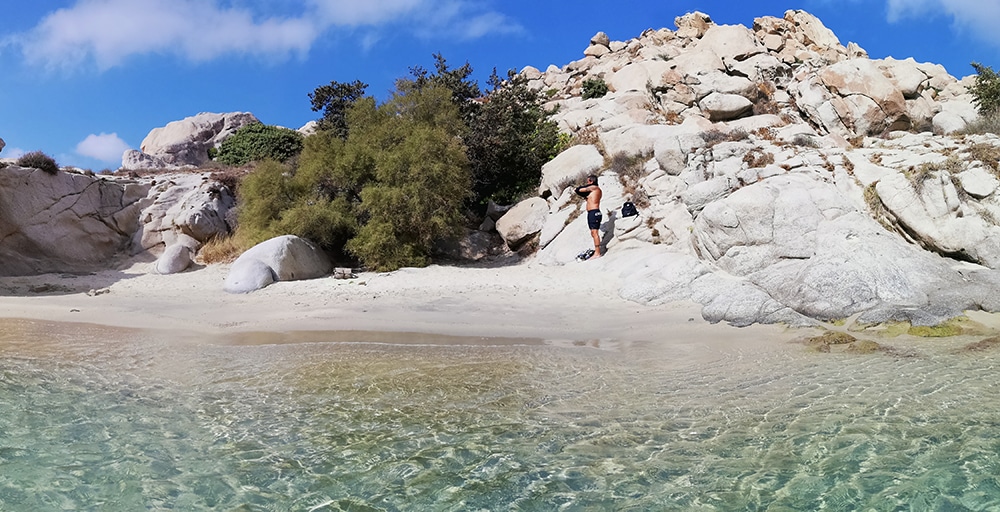

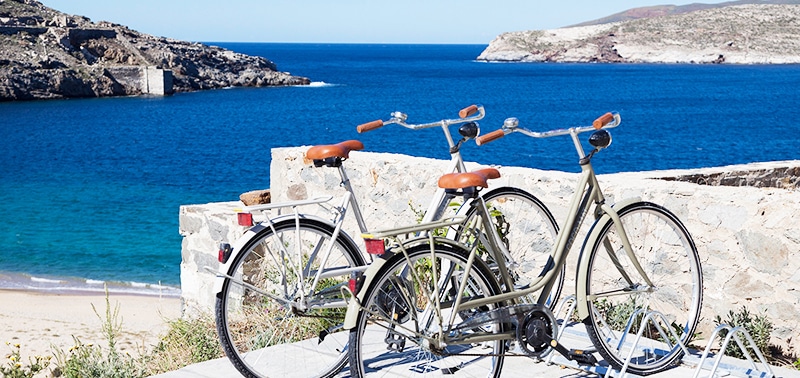
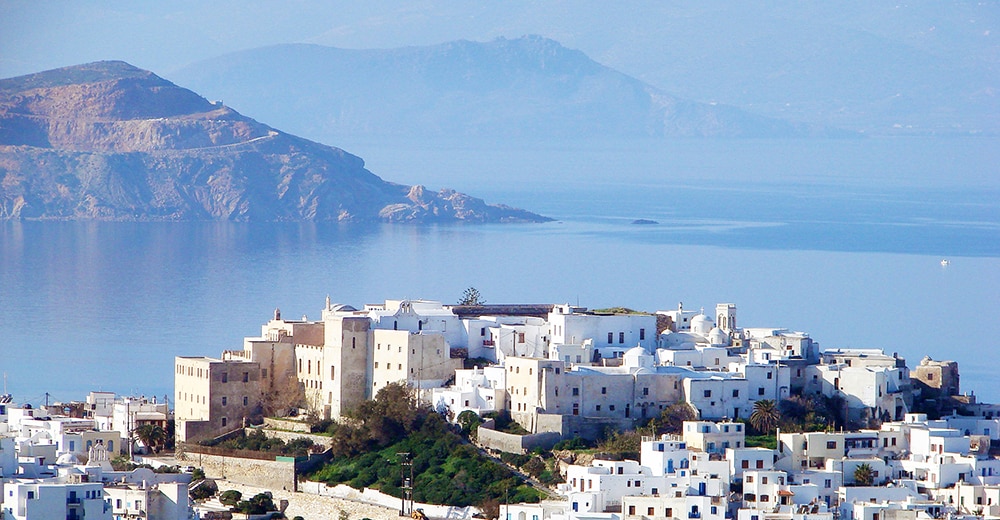
chora
The capital, on the western side of the island, still retains a strong medieval imprint. Behind the modern architecture of the buildings that overlook the port and the lively seafront (called "paralia"), a second scenario opens up to be discovered: from the Venetian, Turkish, Byzantine casbah to climbing in a labyrinth of white alleys up to the Kastro, a well-kept medieval citadel that reserves surprises in every corner. In fact, the upper part of the city, at the end of a fertile plain, is crowned by the complex of the Venetian castle, in which multi-storey houses are abutted, sometimes in the shape of towers and with entrances decorated with coats of arms of the noble families, which blend the Byzantine tradition with Western European elements.
Places to visit in Chora
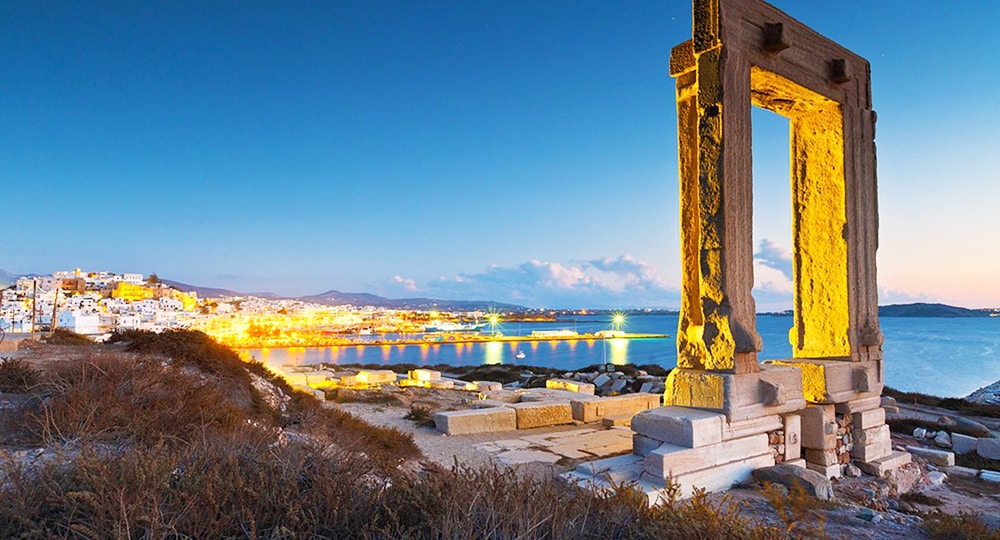
PORTARA surreal and gigantic marble door that frames the sea, it is the symbol of Naxos. It does not lead into a palace or a closed place, but is all that remains of the ancient temple dedicated to the god Apollo, dating back to around 2,500 years ago, left unfinished and facing the sacred island of Delos. It is located on the islet of Palatia, joined by an umbilical cord of land to the Chora. This small island, apart from its historical and archaeological importance, is a unique point to enjoy the sunset over the Aegean Sea and, on clear days, to enjoy the view of the islands of Paros, Delos, Mykonos and Syros.
KASTRO once you leave the seafront, you enter a maze of white alleys, some covered, some unpredictably dead-end, steps, passages, in the ancient working-class neighborhood of Burgos. You go up towards the medieval village built eight centuries ago by Marco Sanudo, grandson of a Doge of Venice. He made this city the capital of his duchy and some stately homes built by the Venetians still exist, many of which have well-kept hidden gardens and coats of arms of the noble families of the ancient owners. It is said that at the time there were 13 towers, today only one remains, that of the Crispi, named after the last dukes of the island. It is also known as the Glezos Tower, named after the last owners who donated it to the Greek state.
CATHOLIC CATHEDRAL it is located at the highest point of the Kastro hill, in one of the most beautiful squares. In this small church there is an ancient Byzantine icon from the 12th century, the longest in the world, double: on one side a beautiful Madonna with the child in her arms and on the back the image of Saint John. There is also a very precious and rare icon of the Madonna breastfeeding her baby: there are only 4 in the world, the other 3 are in Moscow, Germany and the Vatican. There are also the gravestones of the Grimaldi family of Montecarlo. Mass: 9.30am on Sundays and 6.30pm on weekdays.
ARCHAEOLOGICAL MUSEUM it is a precious collection of Cycladic idols, vases and Hellenistic mosaics; once home to the French Commercial School and College where Nikos Kazantzakis, the author of Zorba the Greek, studied. Among the most important pieces in the museum are the figure of a seated woman and that of a man holding an object; Also interesting is the mosaic placed on the terrace outside the museum, from where you can enjoy a beautiful view of the mountains surrounding the Chora.
VENETIAN MUSEUM it was founded in 1999 and is housed in the palace of the Della Rocca Barozzi family. Its history begins at the end of the Fourth Crusade (1207) with the settlement of the Venetians in Naxos. The museum once housed the Consulate of Venice and was later the home of several noble families. The current owners (descendants of the Della Rocca-Barozzi family) have decided to open their house to the public: furniture, jewellery, everyday objects and other memorabilia are on display here. The museum is open every day from 10am to 3pm and in high season also in the late afternoon. In summer, concerts of classical music or popular music and dances of Naxos are held in its garden within the walls (usually on Wednesday evenings); the setting is evocative with a panoramic view of the Portara and the sea at sunset.
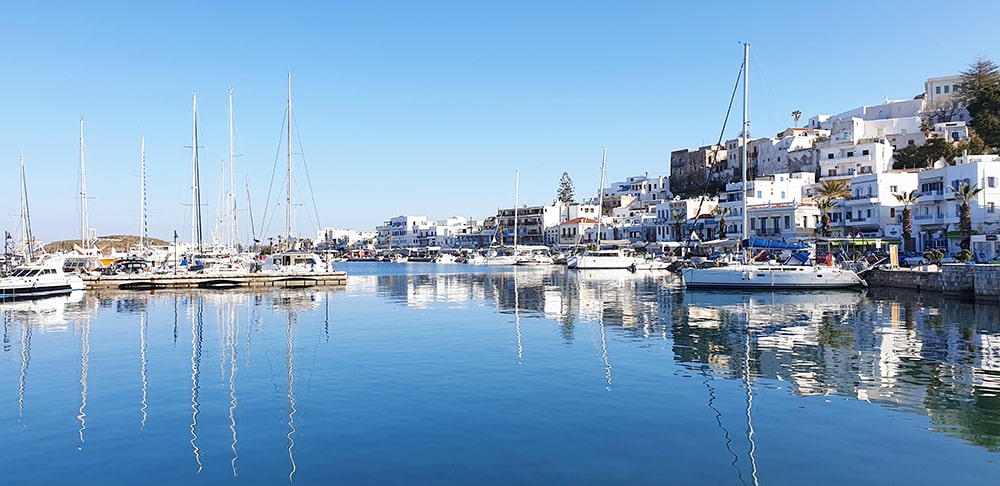
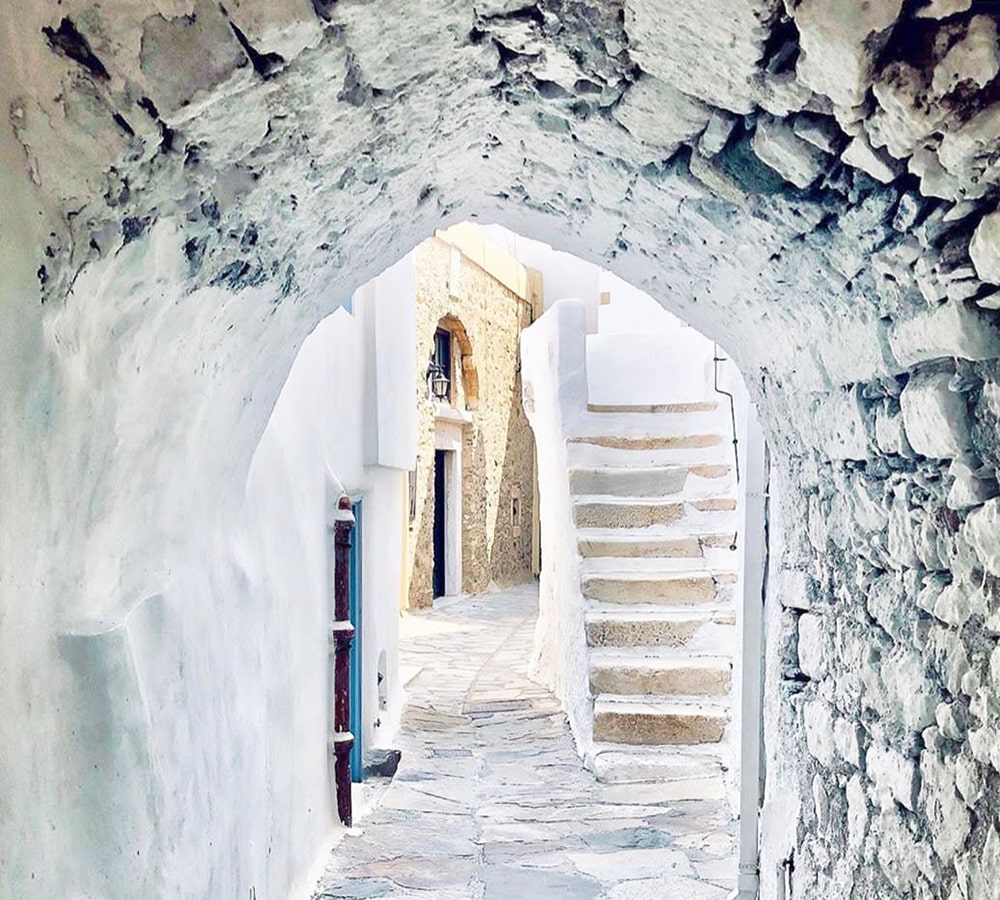

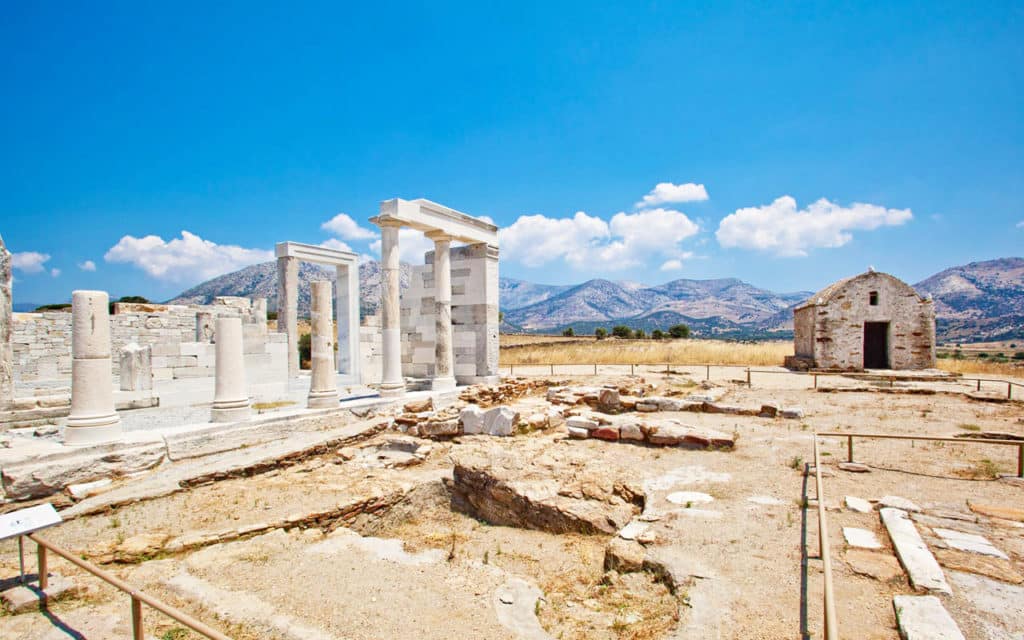
not to be missed on the rest of the island
I KOUROS they are three mysterious marble giants, unique in all of Greece, left unfinished and dating back to the 7th century. B.C.; the largest (10 m) is located in the small village of Apollonas, in the far north of the island; the second (approx. 7 m) is located in the garden of a peasant family in the Melanes area. There is also a third near the one in Melanes, in the open countryside, now easily accessible as it is signposted.
PANAGIA DROSSIANÍ in the Monì area, it is one of the most important and ancient sanctuaries in all the Balkans, with frescoes dating back to the 7th century; it was the abbey church of a monastery.
TEMPIO DI DEMETRA in the Sangrì area, there are the remains of an imposing Ionic temple. It is famous for having been covered with transparent marble tiles which produced a diffused light effect inside; some are visible in the adjoining small museum.
Traditional villages
HALKÍ famous for its beautiful neoclassical houses and for being the home of the ancient Vallindras distillery, founded in 1896, where Kitron is still produced from cedar leaves; nearby there are two very ancient Byzantine churches with frescoes. Also interesting is the local women's craft shop, where you will see an old wooden loom still in use, and the ceramic painting and olive wood processing workshop.
KALÓXILOS immediately after Halkì, on the road to Filoti, there is a detour to the left towards this tiny and fascinating village little known by tourists, where time seems to have stopped. Park before the large church on the right and continue on foot. Right in front of it you will find an ancient house, recently renovated maintaining its original characteristics. There you will find Florios, the friendly owner, who will gladly (and with great pride!) show you the house of his ancestors, now transformed into a small folklore museum. Opening hours: 9.00-16.00, entry €2 for adults, children under 10 years old free.
FILÓTI second town on the island after Chora, dominated by Mount Zeus; in the past a fiefdom of the Barozzi family, whose crenellated castle can still be admired, it boasts some Venetian houses and the beautiful ancient church of Nostra Signora Filotissa. The meeting point of the town is the lovely little square with the enormous plane tree and the bars that overlook it.
APÍRANTHOS known as the "marble country", capital of folklore, famous for its fabrics, popular poems, wine and the strange dialect that mixes Cretan and Byzantine idioms; in the area reachable on foot there is the church of Agia Kiriaki which preserves paintings from the iconoclastic period. There are two Venetian castles, Zevgoli and Bardana, with lions of San Marco; interesting is the Folklore Museum in the pretty square and the small archaeological (free) and geological (free entry with the same ticket as the Folklore) museums. The small sales point of the women's cooperative for handwork and embroidery in this town, located at the beginning of the main street, is worth a visit.
APÓLLONAS small port with characteristic taverns on the sea, in the far north of the island, famous for the larger Kouros. The road to follow is suggestive, sometimes overlooking the sea with breathtaking views of the sea. Along the way, the lovely Abram cove and its small beach of the same name.
KORONOS charming mountain village clinging to the walls of a ravine, in the area of the ancient emery mines; famous for its pure water springs and for its excellent small tavern (see the "Restaurants" chapter below).
POTAMIÁ literally "rivers" in Greek, these 3 villages (Ano Potamià, Mesi Potamià and Kato Potamià) are rich in water and each house has a lush garden; The path that connects them is very pleasant and shaded.
MÈLANES located in a very green valley, in an expanse of olive trees and orchards; famous for its proximity to the other two "Kouros" on the island. The suggestive ruins of the ancient Kalamitsia monastery are nearby. Its numerous taverns are famous whose specialties are... cockerel and rabbit!
MOUTSOUNA small port on the east coast, it was reserved for ships transporting marble, granite and emery extracted from inland mines; today it is famous for its taverns overlooking the marina which serve excellent fresh fish (...watch out for the prices!).
